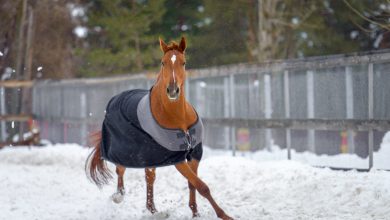
This article is part of our Comfort Awareness Campaign brought to you by Bute-Less.
You know that incredible bond you share with your performance horse? It’s all about trust, communication, and a real passion for each doing our best. He gives you his all, and you keep a sharp eye on him to ensure that he’s feeling his best. But here’s the thing: our amazing equine pals aren’t always able to tell us when they’re feeling uncomfortable or in pain.
That’s where we come in as their caregivers. We’ve got to keep our eyes peeled and become like expert translators of his secret signals. Whether it’s a small change in his behavior or a big shift in how he performs, spotting the signs that our horses might be hurting is a big deal. It’s not just about keeping him feeling good; it’s also about helping him perform at his best.
Don’t disregard these signs in your performance horse that might indicate he’s not feeling in tip-top shape. Keep him comfortable and performing to his best ability.

Changes in Performance
A sudden drop in performance can be like a flashing neon sign that something’s not right. You might notice your usually zippy horse becoming sluggish, struggling with accuracy, or even outright refusing to cooperate. Whether it’s a reluctance to pick up the pace, a hesitation to respond to cues, or a lack of enthusiasm for tasks he once enjoyed, these performance changes can speak volumes about hidden discomfort.
Is your finished horse just not extending that trot like before? Maybe your reining horse isn’t nailing his stops anymore, or your trail horse balks at stepping up and over those trail obstacles. Whatever it might be, you’ll notice if your performance horse begins to struggle, and take this as a serious warning sign of potential trouble.
[Keep Him Comfortable in His Stall]Resistance or Evasions
Horses have their own unique ways of communicating distress, and resistance or evasion behaviors are a language they might use. Suddenly refusing obstacles he once stepped over, throwing in a few surprise bucks, or even sidestepping tasks they usually breeze through—these could all be their way of saying, “Hey, something hurts, and I can’t do this comfortably.”
A change in attitude can also signal a problem. We all have our off days, but if your normally calm and cooperative partner suddenly starts acting irritable, agitated, or even anxious, there might be an underlying cause. Don’t be quick to brush it off as bad behavior, if he’s exhibiting new and odd quirks.
Difficulty Tacking Up or Sensitive to Touch
Saddling up should be a routine affair, but if your horse starts showing resistance, like pinning his ears, swishing his tail, or even trying to move away, he might be telling you that something’s bothering him. This could be especially true around areas like the back, neck, or mouth.
If he’s also showing sensitivity to touch, this could be an issue. Imagine if someone poked you right where you had a bruise – you’d probably flinch too. Horses are similar. If your usually chill horse gets antsy, pins his ears, or even tries to move away when you touch or groom certain areas, it’s like an arrow pointing at discomfort. Take time when you saddle to gently run your hands down his back, looking for sensitive areas or flinching.

Altered Movement/Changes in Gait
Keep an eagle eye on your horse’s movement, as it often holds the secret to his well-being. If you start noticing uneven steps, a stiff or choppy gait, or a reluctance to engage in certain gaits, it’s like his body’s way of waving a red flag. An asymmetrical stride or uneven weight distribution might indicate that something’s not quite right and your horse is trying to compensate for a sore spot. If he begins bunny-hopping at a lope or
Horses are poetry in motion, but when that motion becomes choppy or uneven, it could be a cry for help. Be on the lookout for new tail swishing as well. Although some horses swish their tails not as a sign of pain, do it for balance at a run, or to ward off flies, it can be a sign of pain if it’s new. Horses often communicate with their tails, and if you notice your horse swishing his tail more than usual or tucking it tightly against his hindquarters, it could signal discomfort – perhaps in his hindquarters, back, or even due to an ill-fitting saddle.
Your performance horse gives his all every time he steps in the arena. You care about his well-being and provide him with the best support and care you can. Don’t forget to read his subtle signs and tune into his language, so you can identify when he’s just not feeling up to the task.


